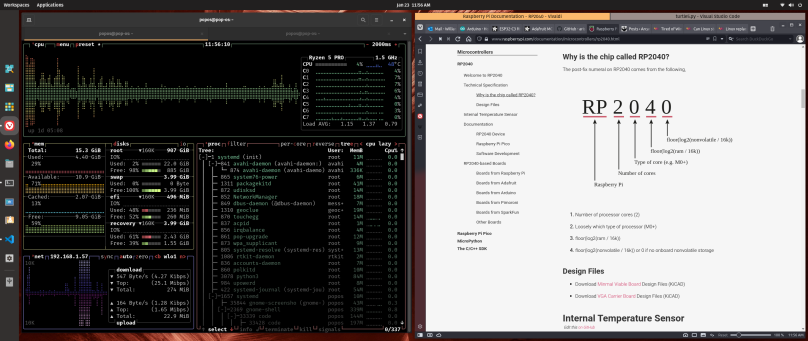
I don’t know how many years I’ve read the question “is this the year for the Linux Desktop?” And I’m tired of reading it. Microsoft answered the need for a corporate operating system that could be managed en masse from a central control point. Linux (and until recently, Apple’s macOS) not so much. That, and Microsoft’s Office tools. For those hard-core Linux evangelists, ssh is not the answer. ssh is little different than sitting directly in front of a Linux system. Please, don’t quote me all the wonderful tools in the comments. I’ve sampled the bigger known tools, and discovered that if it’s headless servers or VMs or containers then the tools are decent. A corporate fleet of Linux desktops, not so much.
To be brutally honest I hate the idea of a “year of the Linux Desktop.” I’m quite happy with the quality and choice presented by today’s Linux distributions. Moving towards the same corporate position currently occupied by Windows would make that Linux distribution no better than Windows, especially current Windows 10 and newish Windows 11.
Up to this point in time I was indifferent to Windows for work and personal use. I had no choice with work as that’s what the companies I worked for used corporate wide on their desktops. They had it all locked down to meet all their corporate and security needs, meaning I installed only what they deemed worthy, and only when they signed off on it. At home I ran an unlocked version of Windows 10 just so I could tinker and do some research that required Windows 10. But those days are long gone.
2022 marks my second year in retirement. During that period I’ve “detoxed” from using Windows. The one machine that came with Windos 10 Pro preinstalled, the Minis Forum UM250, now runs Pop!_OS Linux. I would have switched to Linux as soon as the UM250 arrived but I was busy such that it sat off to the side, which was a waste of resources. Now that Pop!_OS is running on it, it’s become a solid, dependable workhorse. And an absolute joy to use.
Is my choice of Pop!_OS some sort of ringing endorsement? No, not by a long shot. It should be considered a ringing endorsement of Linux. I exercised my ability to chose a Linux distribution to try because that’s the way the current Linux distribution system works. It’s not just technology, but choice, that is key to Linux. Choice of which distribution to use, and nearly infinite choice of what to do within that distribution. Linux enables choice, and that is why I never want to see Linux become the corporate tool for computing that Windows currently is. Windows can be tailored to the point where you have no choice. Even when I purchased my licensed copy on the UM250 for personal use, I discovered that there were certain actions, certain choices, that were still forbidden to me unless I performed some other rather ridiculous actions. Sorta like an iPhone and iOS. What I will (barely) begrudgingly put up with on my iPhone, I will not under any circumstances put up with on a computer I’ve purchased and own outright. Not even under macOS (and that’s also slowly getting annoying, which is another post for another time). Windows has the corporate market locked up, and those corporations that know what they’re doing use Windows to keep the drones locked down. I don’t ever want any Linux distribution to be that way. Not now or ever, or at least as long as I’m alive and capable of using an operating system.
So for all those who wish for a Linux “desktop year,” please go install Windows and leave the rest of us in peace with Linux.




You must be logged in to post a comment.